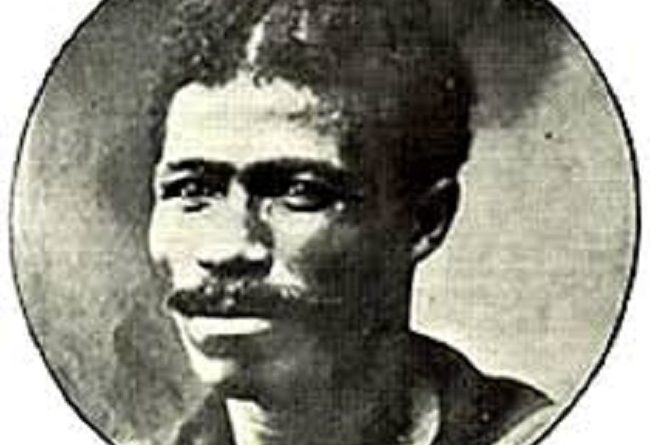Candido da Rocha,The Generous Capitalist
There is a stock reply in Nigeria when a man is asked to spend money. He, in most cases, would say: “I am not another da-Rocha!” It is an expression that has to do with stupendous wealth or display of it or generosity or a combination of all. However, while many use the statement with ease, not all of them know anything about the man called Candido da-Rocha. We offer you his story and what made him ‘tick’:
The Generous Capitalist
The life of Candido da Rocha is a complex read. He was an entrepreneur whose activities did not follow the trend of popular economic theories. He was a celebrated capitalist, with property and estates running into billions of naira.
He was a businessman with old-fashioned-idiosyncrasies, yet he accumulated properties in every nook and cranny of Lagos. He had no apologies for being rich and enjoyed showing off.
One of his habits, according to one of his grand-daughters, Chief (Mrs) Yewande Oyediran, was throwing coins to children from the balcony of his one-story building – christened ‘Casa d’Agua’ in English ‘Water House’ – at Kakawa street.
Candido da Rocha was arrogant and ostentatious; at the same time, he was not one who played to the popular masses. He was rarely seen in public. When he was nominated as a candidate for an election by his bosom friend Herbert Macaulay, he began his address to the party faithful thus: “I am Candido da Rocha, your candidate into the House, vote for me if you like, and if you don’t, all well and good.” Immediately after the ‘speech’ he vanished.
He did not need their votes and therefore he did not get them. The people of Lagos ‘dashed’ him some 20 votes.
While some analysts believe that Da Rocha’s attitude at the rally was audacious, Mrs. Oyediran disagreed: “No, papa was jotting a very proud fellow. He surely did not mean it the way people had interpreted it. He was only saying that judging from his background as a serviceman, a man who had shown so much interest in the welfare of the people, the people should vote for him. Papa was a very modest man.”
Indeed, Da Rocha was a very modest and generous capitalist. During the Second World War, when the authorities of Kings College were looking for a place to relocate the students in the boarding house – among whom were Tiamiyu Bello Osagie, who would become one of Nigeria’s most celebrated gynecologists; Adenekan Ademola, son of Nigeria’s first indigenous Chief justice, Adetokunmbo Ademola; Dapo Aderemi, son of Sir Adesoji Aderemi, the legendary Onni of Ife – da Rocha volunteered his Bonanza Hotel on Customs Street, Lagos, and did not collect a dime for the period it was used. Even after the war, when the government asked influential Nigerians to contribute to the rehabilitation fund, he made substantial donations and he instructed that the amount should not be disclosed to the public.
Because of his wealth, a lot of people assumed that he built the ‘Water House’ where he lived most of his life. The house, which even by the standards of modern architecture stands out as a formidable edifice, was built by his father, Esan. The structure is fortified by massive pillars, and it can compete favorably with ancient temples and synagogues. It is a masterpiece with some figurative decorations symbolic of the hard work of the past; the honesty of ancient man; the affordability of things, the vision of a peaceful man, the quality of things of old, the opulence of a blessed man, a lesson for the modern man and a monument of virtue.
A reconstruction of Da Rocha’s history shows that his family was originally from Ilesha. His father John Esan adopted his name da Rocha while in captivity in Brazil. The adoption was to demonstrate his emotional attachment to his master and possibly a way of expressing his desire to identify with the name that had brought him some fame and luck. Although Candido was born in Brazil in 1869, his father never stopped dreaming of taking him and all his children back to their homeland in West Africa. However by the time, John Esan found his way back to ‘Nigeria’, he did not go back to Ilesha. He decided to integrate his family into the new settlement that was taking shape in Lagos.

Eko Samba community in Brazilian quarters, Lagos.jpgogether with other settlers and returnees from Brazil, they led a delegation to the representative of the Queen of England who was the symbolic head of the colonial administration.
They requested parcels of land on which they could settle so that they, too, could start to contribute their own quota to the economic growth of the Lagos colony. Their request was granted. They were given an expanse of land in present-day Lagos which stretched from the Central Bank to Moloney street.
The area was christened Popo Aguda (Brazilian Quarters) and it became the settlement for the returnees and their families. Some names of other notable returnees include Agusto, Rodrigues, Vaughan, da Rocha, Salvador, the Pereiras, Pedro da Silva and Gomez.
On the two plots allocated to Esan da Rocha on Kakawa street, he built the ‘Water House’. On his death, Candido the eldest son moved into the house. It was said that he paid off his other siblings before taking over the entire complex.
The first borehole in Lagos fitted with an imported iron mechanism to pump up water was installed in the da Rocha house. People in the neighborhood came to fetch water. He sold water to some, to others he gave free. From the commercialization of this essential commodity, da Rocha made a considerable percentage of his wealth.
Apart from selling water, Candido da Rocha operated a small shop at 12 Kakawa street where he traded in general merchandise which included gold brass, gold dust, imported shoes, brass fittings, textiles, and jewelry. He exported kola nuts, alligator pepper, bitter kola and adire tye and dye to Brazil. With the profit from his trade, he embarked on a number of capital projects.
He also saw the value of owning property and reportedly acquired large tracts of land in Lagos especially on Broad Street, the Marina, Customs Street, and Agege. The Agege land alone was over 55 acres on which stands a historic one-story building, the first of its kind. He built it as a relaxation hideout whenever he went to the farm and to possibly make himself elusive to the throng of humanity loading around his Kakawa residence.
Candido da Rocha did his banking in style. Stories with respect to his banking activities are woven in myths. What is real, however, is that he operated some accounts with the then Standard Bank of Nigeria, Marina, and Barclays Bank.
He was reputed to be the most affluent depositor in both banks. It was popularly believed then that da Rocha’s accounts formed up to 80 percent of the total deposits in the banks of all customers. His massive fortune earned him a large measure of respect and fear.
One popular story which indicates the awe in which da Rocha was held goes thus on a certain day, da Rocha went to the bank and joined other people on the queue. All of a sudden, one Chief J.A Ajao emerged from nowhere and dashed to the front of the line.
The cashier was about to attend to him when da Rocha flared up and threatened to close his account with the bank – National Bank Marina. It was Ajao himself who tendered effusive apologies to da Rocha for his misdemeanor with the excuse that he never knew that ‘a whole da Rocha was on the queue.’
Candido da Rocha did his banking in style. Stories with respect to his banking activities are woven in myths. What is real, however, is that he operated some accounts with the then Standard Bank of Nigeria, Marina and Barclays Bank. He was reputed to be the most affluent depositor in both banks. It was popularly believed then that da Rocha’s accounts formed up to 80 per cent of the total deposits in the banks of all customers. His massive fortune earned him a large measure of respect and fear.
Mrs. Oyediran, his daughter, believes that this story was invented by the British, although she was too young at the time the incident was to have occurred to confirm its veracity. She, however, stated that either this particular episode or another similar incident caused the British to scamper to ‘Water House’ to tender an apology to da Rocha. This action was enough to send a signal to the public that da Rocha was annoyed with the bank and had threatened to withdraw his money.
Another account has it that da Rocha was in the habit of taking a stroll to Standard Bank (now First Bank) every evening. On such occasions, he would go into the banking hall and have a short rest before returning to his house. Such outings kept the gossip mills rolling with the tales of da Rocha going to the bank to threaten them with the withdrawal of his huge deposits which would have led to a monetary crisis in the bank.
Despite all the myths about his invincibility, da Rocha remained a very modest man. He once reacted to the claim that he was a millionaire in an unassuming tone: “Don’t mind these Lagos people. They are poor people. When you have 2,000 pounds in Lagos, you are called a millionaire. When you have a few shillings, they say you a rich man… I can tell you that I am not a millionaire but God had only blessed me because I know that only a very few people in my class have the money that I have.”
Da Rocha’s flamboyance and material wealth seemed to overshadow the religious qualities of the man. This does not suggest however that he was not religious. He was a Roman Catholic, his parents were Roman Catholics. Most of his friends were Catholics. The Rodrigues, the Pereiras, the Gomezs, and the Sapara Williams. Indeed he was active in the church. He practically financed the construction of about three prominent churches in Lagos.
Despite his legendary exploits and his fabulous wealth, despite his father’s pioneering efforts in the resettlement of the returnees in Popo Aguda, despite Candido da Rocha’s overwhelming presence in the whole of Lagos and Agege, despite his imposing stature and intimidating achievements, the college that he gave his building free of charge, to the government that he gave a huge amount for the rehabilitation of World War II veterans, despite his sponsorship of quite a number of Lagosians to school and despite the numerous good things that he did for the development of Lagos, there is no single street named after him on Lagos Island in particular and Lagos state in general.
This, however, should not be a measure of his achievement. Indeed da Rocha had so much land, that he could have named a dozen streets after himself if he had wanted to, his life was a symbol of contentment. Although he was not a self-made man, he inherited a large fortune from his father; he worked hard to sustain the fame associated with his family.
Da Rocha was a legend in his own time, his wealth was beyond the imagination of the common man and this has given rise to a lot of speculation on how he could have possibly amassed such a vast fortune. However da Rocha himself has suggested perhaps, he was not so rich as everyone believed but in comparison with the masses around him who were poor, he looked fabulously wealthy.
Culled from People in TheNEWS (1900-1999): A Survey of Nigerians of the 20th Century, published in year 2,000 by TheNEWS magazine





